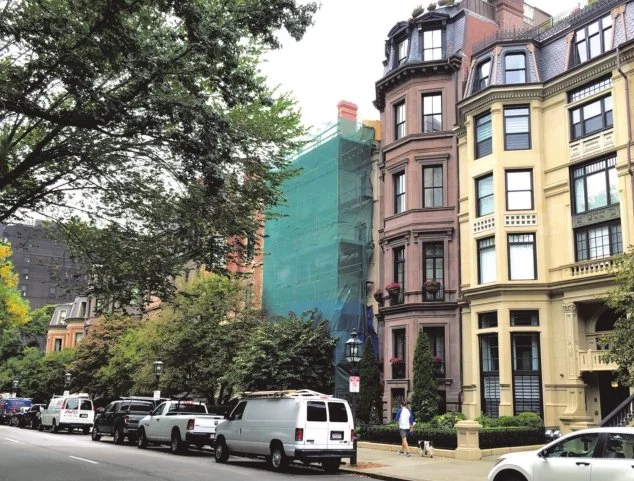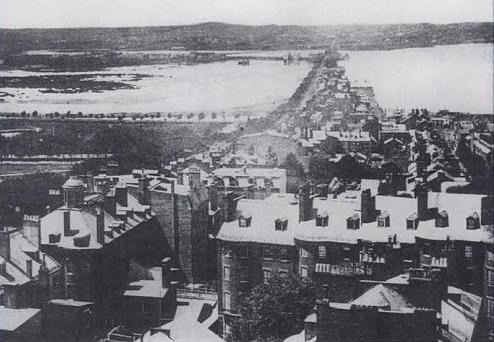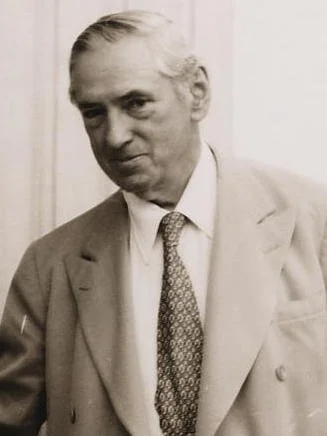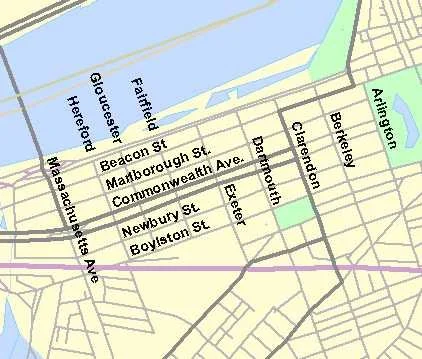
Back Bay formality
Statue of Leif Erikson on the Commonwealth Avenue esplanade. The sculpture, by Anne Whitney, went up in 1887 and was the first sculpture of the Norse explorer erected in the Americas.
“The statue of Leif Erikson was wearing a necktie that day when I started to walk down Commonwealth Avenue from Kenmore Square to the Boston Public Garden. The statue’s tie was a foulard, frayed and stained.’’
— From the short story “The President of the Argentine,’’ by John Cheever (1912-1982)
Trying to keep up grand appearances at years roll by
In Boston’s Back Bay neighborhood, an old house is draped while being repaired.
Old building materials, new insulation standards and consistently wet summers can spell trouble for many of Boston's historic homes, contractors and experts said, so property owners need to be on the lookout now for warning signs.
Neighborhoods like the Back Bay, Beacon Hill and South End are known for historic brownstones and rowhouses, but buildings from a century ago weren't constructed according to current codes.
In particular, lintels which support walls above doors and windows, may have been made with steel, but what was state-ofthe-art then is woefully out of date now, according to John Holland of Holland & Co., who has decades of construction and rehab experience.
"When steel lintels were introduced in the turn of the century, they were new material, but they weren't galvanized," Holland said, noting that kind of metal is susceptible to rust and water damage, and that can lead to significant repairs as water freezes and expands over time, damaging stone, and lintels.
To read the whole article, please hit this link.
View (1858) from the Massachusetts State House westward along the Mill Dam (now Beacon Street), which separated Back Bay (left) from the Charles River. The Mill Dam and the Cross Dam (in distance is the modern Massachusetts Avenue-Kenmore Square area, with mills barely visible near juncture with the Mill Dam). They were part of an attempt to derive power from tides. Trees along north-south waterline represent western boundary (now Arlington Street) of the Boston Public Garden.
The Back Bay was built on land reclaimed from the Charles River basin. Construction began in 1859, as the demand for luxury housing exceeded the availability in the city at the time, and the area was fully built by around 1900. It remains one of Boston’s richest neighborhoods
'Though his pass is middle-class'
James Michael Curley in 1949, in his final term as Boston mayor
Principal streets of the Back Bay, an affluent part of Boston
“I enjoy a tender pass
By the boss of Boston, Mass.,
Though his pass is middle-class
And not Back Bay
But I'm always true to you, darlin', in my fashion
Yes, I'm always true to you, darlin', in my way.’’
— From the song “Always True to You in My Fashion,’’ by Cole Porter, in the 1948 musical Kiss Me, Kate. The “boss” referred to was apparently the colorful and corrupt Mayor James Michael Curley (1874-1958).
Partly non-virus-related!
Adapted from Robert Whitcomb’s “Digital Diary,’’ in GoLocal24.com
With many newspapers shrinking unto death, all they seem to have room for is COVID-19 stuff; there are many other important things happening around the world that aren’t being reported. As the late Bill Kreger, a news editor to whom I reported at The Wall Street Journal once observed: “Sometimes the most important story starts out at the bottom of Page 37.’’ What might we be missing?
Well, The Boston Guardian reports that property and violent crime is down in its circulation area (the Back Bay, Beacon Hill , downtown and Fenway) this year. But maybe that’s a virus-related story? As newly unemployed people run out of money will property crimes increase?
Then there’s an inspiring little item from the March 24 Wall Street Journal: Voters in Mexican border city of Mexicali have admirably told the U.S. company Constellation Brands not to complete a $1.4 billion brewery there because the facility would take so much water that it could jeopardize the irrigation-dependent agriculture in the region.
In other heartening, if mostly symbolic, news, the U.S. has indicted Venezuelan dictator Nicolas Maduro and some sidekicks for drug trafficking and is offering $15 million to those who aid his capture. Don’t expect Maduro to appear any time soon in a federal court, but the move is apt to make him nervous.
And there’s the important unhappy news that the world’s greatest coral reef, Australia’s Great Barrier Reef, had just suffered another mass bleaching caused by global warming, whose associated increase in carbon dioxide makes sea water more acidic. For more information, please hit this link.
Checkerboard crisis
The Hancock Tower, in Boston’s Back Bay, in 1974, showing the plywood over where many windows had popped out because of an engineering flaw in the window installation. The problem was obviously fixed and the building opened in 1976. The 62-story, 790-foot skyscraper remains the tallest building in New England.
There's still plenty of life in newsprint: Welcome The Boston Guardian
The Boston Guardian, a new weekly newspaper that’s the successor to the recently closed Boston Courant, has come out with its first edition. The paper serves Boston’s downtown, Back Bay, Beacon Hill and Fenway neighborhoods and will soon expand circulation into the booming Seaport District.
The profitable Courant had a hefty circulation of 40,000 and The Guardian will probably do at least as well. While it has a somewhat different design than The Courant it will cover the same sort of topics, especially development and politics. I hope that they also do more profiles of the many curious characters who live and/or work in their circulation area, one of the world’s most stimulating urban centers.
David Jacobs is the editor and publisher and his wife and longtime business partner, Gen Tracy, is the associate editor of the new paper – the functions they had as The Courant’s owners. Jennifer Maiola is the managing editor of the new paper, as she was of The Courant.
Neither Mr. Jacobs nor his wife own The Guardian. Rather, a group of investors have capitalized it to let the couple and their colleagues continue to serve their community. {Disclosure: The duo are friends of mine, and I have long admired their commitment to community journalism, not to mention their ingenuity, good humor, civic courage and resilience.}
Mr. Jacobs and Ms. Tracy have gotten a lot of attention for deciding to push back against the idea that all print publications must have a Web site. They have come to see such sites as just sucking money, energy and attention from the profitable print product, which, in any event, their readership prefers over staring at screens for coverage of their neighborhoods. And of course Web sites, as wonderful as they can be, are also fertile ground for cut-and-paste plagiarism of copyrighted journalistic work.
The Courant was closed on Feb. 5. In what many legal and media observers saw as an outrage against justice, The Courant lost a wrongful-termination suit from an executive hired to help increase advertising sales.
Mr. Jacobs said that the judgment with interest grew to about $300,000, with $250,000 in legal fees, forcing the couple to shut The Courant and liquidate its assets.
But The Guardian will now take up where The Courant left off as a source of rigorous, useful and often entertaining reportage about the heart of Greater Boston.
-- Robert Whitcomb







